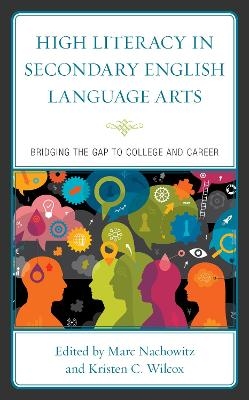
High Literacy in Secondary English Language Arts
Lexington Books (Verlag)
978-1-4985-7075-6 (ISBN)
This volume culls scholarship on both what high literacy is and how it is developed. It embraces the call put forth by Langer and Applebee (2016) that high literacy must continue to be our aim and to see more research analyzing and identifying how teachers might promote literacy practices that promote deep thinking around important content. The editors offer a conceptual framework for high literacy that explicates how each component (i.e. reading, writing, dialogic engagement, and epistemic cognition in literary reasoning) relates to the others and from what scholarly literature these concepts have been derived. Individual chapter authors provide in-depth examinations of the existing research base on particular related topics, focusing on the two important cross-cutting aims of the volume: (1) explicating the roles reading, writing, dialogic engagement, and epistemic cognition hold in high literacy development, and (2) providing examples of practices recommended to develop high literacy.
Marc Nachowitz is assistant professor at Miami University Kristen C. Wilcox is associate professor at University at Albany
Foreword, Judith A. Langer
Acknowledgments and Dedication
Introduction, Marc Nachowitz and Kristen C. Wilcox
Part 1: Framing High Literacy
Chapter 1: Conceptualizing High Literacy: A Framework for Research and Practice, Marc Nachowitz and Kristen C. Wilcox
Chapter 2: College and Career Readiness Standards and High Literacy, Kristen C. Wilcox, Jill V. Jeffery, and Fang Yu
Part 2: Components of High Literacy
Chapter 3: Dialogically Organized Instruction: Encouraging Courageous Voices in Polarizing Times, Janet I. Angelis, Kelly Millet, and Eija Rougle
Chapter 4: Dialogic Literary Argumentation as High Literacy in English Language Arts Classrooms, George E. Newell, Theresa Thanos, and Min-Young Kim
Chapter 5: Attending to Readers’ Identities, Positions, and Social Contexts: An Argument for Disciplinary Literacy in English Language Arts, Julie E. Learned, Mary Jo Morgan, and Laura Dacus
Chapter 6: A Design Architecture for Engaging Middle and High School Students in Epistemic Practices of Literary Interpretation, Sarah Levine, Allison H. Hall, Susan R. Goldman, and Carol D. Lee
Part 3: Curriculum and Instruction for High Literacy
Chapter 7: Digitally-Mediated Dialogic Engagement, Marc Nachowitz
Chapter 8: The Potential of Using a Cognitive Strategies Approach to Enhancing the High Literacy of Secondary English Learners, Carol Booth Olson, Lauren Godfrey, Rachel Stumpf, and Huy Q. Chung
Chapter 9: Resisting the “Más o Menos” Mindset: Design-Based Research to Boost Latinx Success in Advanced Coursework through Dialogically Organized Instruction, Ryan McCarty, Tim Pappageorge, and Claudia Rueda-Alvarez
Chapter 10: Enacting High Literacy Practices in the Classroom: Considerations for Preservice Teachers, Kristine E. Pytash, Rhonda Hylton, and Elizabeth Testa
Chapter 11: Conclusion
About the Authors
| Erscheinungsdatum | 10.05.2021 |
|---|---|
| Co-Autor | Janet Ives Angelis, Huy Q. Chung, Laura Dacus |
| Verlagsort | Lanham, MD |
| Sprache | englisch |
| Maße | 159 x 239 mm |
| Gewicht | 599 g |
| Themenwelt | Sozialwissenschaften ► Pädagogik ► Berufspädagogik |
| Sozialwissenschaften ► Pädagogik ► Bildungstheorie | |
| Sozialwissenschaften ► Pädagogik ► Erwachsenenbildung | |
| ISBN-10 | 1-4985-7075-5 / 1498570755 |
| ISBN-13 | 978-1-4985-7075-6 / 9781498570756 |
| Zustand | Neuware |
| Informationen gemäß Produktsicherheitsverordnung (GPSR) | |
| Haben Sie eine Frage zum Produkt? |
aus dem Bereich


